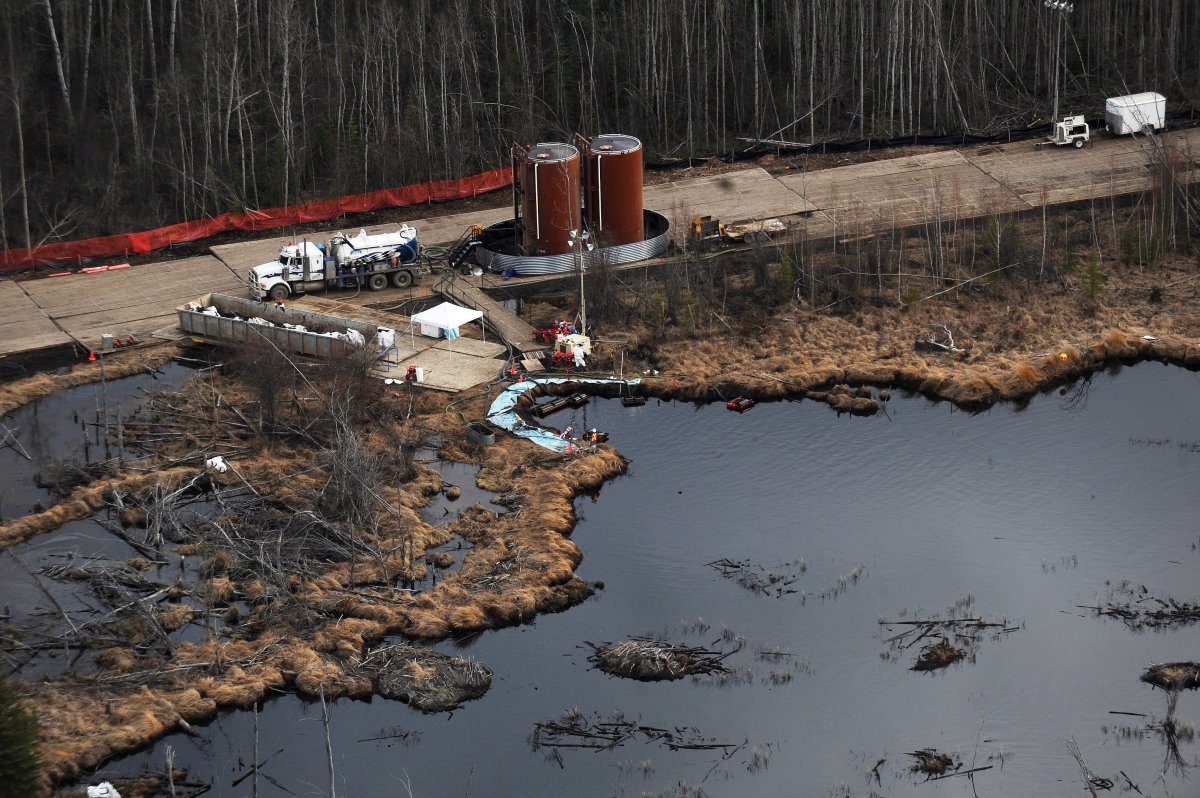Alberta’s 2011 Plains Midstream oil spill was so big the provincial oil regulator had to halt hundreds of planned inspections to deal with it.

In April 2011, 23,000 barrels of oil spilled from a Plains Midstream pipeline near Peace River in northern Alberta – the second-largest spill in Alberta history.
“We were pulling staff to manage that from all over the province,” said Energy Resources Conservation Board spokesman Darin Barter.
That had a direct effect on the regulator’s operations: No one was available to inspect pipelines under construction.
(Barter couldn’t say how many of the board’s 60 inspectors were kept busy at the Plains spill over the following several months.)
Plains Midstream, which faces a trio of charges in connection with the spill, did not respond to questions; it has said it’s reviewing the charges and “will respond formally with our position in due course.”
Read: How good are Alberta’s energy regulators?

Get breaking National news
Board staff inspected 459 pipelines under construction in 2010, but only 9 in 2011, according to figures obtained by the Alberta NDP through Freedom of Information legislation. 8,721 kilometres of new pipeline were built in Alberta that year – a level of construction on par with the previous few years.
But the low number of construction inspections in 2011 is highly unusual.
“It’s a significant drop. It’s really something,” Barter said. “That’s an anomaly, given the size of that spill and the manpower that we dedicated toward it.”
Pipeline construction inspections are comparatively low-priority, Barter said. “We focus on the highest-risk areas.”
“The risk of a failure because of corrosion or any other reason is pretty low on a brand-new pipeline.”
Other types of pipeline inspections, such as operations inspections and failure investigations, actually increased slightly between 2010 and 2011.
Read: What it’s like when oil runs through your backyard
That spill made the board change the way it responds to major spills: Its “Incident Command Structure” “ensures that the right people are in the right place at the right time, and that the lines of communication are clearly laid out if an incident should occur,” Barter said. “This results in regulatory effectiveness during and beyond an incident.”
ERCB has 60 front-line field inspectors. And despite the 2011 staff shortage, Barter said the board has sufficient resources to deal with crises like this and still carry on its normal operations – it doesn’t need more.
“For 75 years, we’ve been conducting inspections in Alberta. We’ve adjusted staffing levels and targeted inspections as required. As resources change, as technology changes, we’ll adapt as we need to.”
In-depth, interactive: Crude Awakening: 37 years of Alberta oil spills
Watch: Energy Minister Ken Hughes on the new Alberta Energy Regulator






Comments